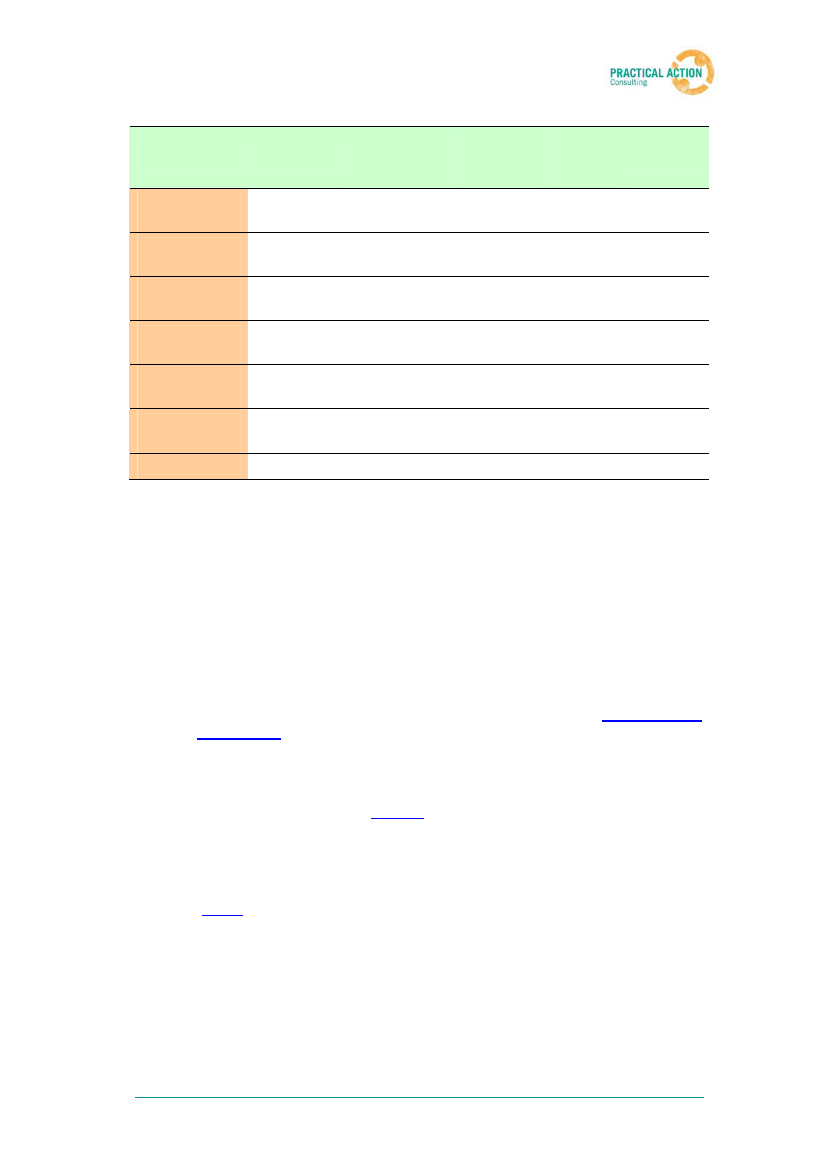
4.1.
Table 8: Matrix of finance sources for NGOs and small enterprises.39
Grants
Equity
investments
Soft-
loans
Multilateral
agencies
x
x
Bilateral
agencies
x
x
National
institutions
xx
Local
investment
xx
Foundations
and charities
xx
Social
investment
xx
Carbon traders
x – applicable but limited. xx – applicable.
xx
xx
xx
xx
Market-
based
loans
Carbon
finance
xx xx
xx
xx
xx
xx
xx
International multilateral agencies
Funding is available through international multilateral agencies such as the World
Bank (WB), United Nations (UN) Agencies, European Commission (EC), or the
African Development Bank. This type of funding is usually for large projects at a
national or regional level and consists of loans at an interest rate or payback
periods below commercial averages, and sometimes grants.39 Funding is generally
only made available for governments although certain opportunities exist for NGOs
and enterprises.
• The UNDP administers the Global Environment Fund Small Grants
Programme (UNDP- GEF -SGP) that funds NGOs and CBOs to
implement small-scale renewable energy projects in developing
countries.43
• The UNEP’s Rural Energy Enterprise Development (REED) initiative
operates in Africa as AREED to develop new sustainable energy
enterprises that use clean, efficient, and renewable energy technologies.
AREED offers rural energy entrepreneurs a combination of enterprise
development services and start-up financing.44
• The Program on Scaling-Up Renewable Energy in Low Income Countries
(SREP) is a targeted program of the Strategic Climate Fund (SCF), which
is within the framework of the Climate Investment Funds (CIF).45 SREP
pilots programmatic interventions in selected low income countries that
greatly increase the use of renewable energy to support economic
development and improve access to modern, clean energy.46 Grid and off-
grid electricity applications including small hydro or biomass-based power,
wind and solar powered systems, and geothermal. Cooking and heating
applications including sustainable community forests, improved cook
stoves, geothermal heating, and biogas or other renewable-based fuels.
Renewable Energy to Reduce Poverty in Africa
31